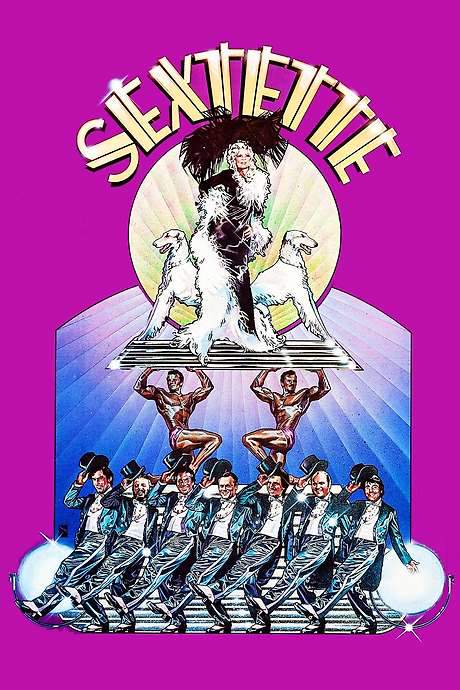Warning: spoilers below!
Haven’t seen Monte Carlo yet? This summary contains major spoilers. Bookmark the page, watch the movie, and come back for the full breakdown. If you're ready, scroll on and relive the story!
Monte Carlo (1930) – Full Plot Summary & Ending Explained
Read the complete plot breakdown of Monte Carlo (1930), including all key story events, major twists, and the ending explained in detail. Discover what really happened—and what it all means.
Countess Helene Mara, Jeanette MacDonald, is about to marry Duke Otto von Liebenheim, Claud Allister, but bolts from the altar with her maid Bertha, Zasu Pitts, carrying only 10,000 francs. They slip away to Monte Carlo and check into an elegant hotel, plotting to win a fortune at roulette. The moment Mara enters the casino, it looks like luck smiles on her as she racks up a stunning win, only to see the fortune slip away in a flash. A stranger, Count Rudolph Falliere, Jack Buchanan, takes a quiet shine to her, and Mara rebuffs his advances even as he serenades her via the telephone.
Rudolph doesn’t give up. He befriends Mara’s hairdresser, Paul, John Roche, who casually reveals Mara’s precarious financial situation. Seizing an opportunity, Rudolph poses as a fellow hairdresser to close the gap between himself and Mara, soothing her headaches and earning her trust. Mara hires him first as hairdresser, then as chauffeur and footman, and with every careful gesture Rudolph wins a little more of her confidence and affection, even as he hides his true identity under the veil of service.
Eventually, Mara admits she has no money and must fire her new helper, a blunt truth that threatens to shatter the fragile bond they’ve formed. At that very moment, her former fiancé arrives and—despite the deception elsewhere—announces his delight at marrying her, but only for her fortune. Mara’s self-image in social circles makes her insist on a “different” future, and Rudolph plays along. He tells her that he has won a vast sum at roulette and promises to help her, prompting Mara to part with her last 1,000 francs. Yet the Duke is still present in Monte Carlo, and the two sides collide in a moment of dark irony. Two hours pass; Mara returns to her apartment, dreamy and distant, telling Bertha that they dined, danced, and saw Monte Carlo, and that she had sent Rudolf to the casino to gamble for her—she longs for his return.
Back in Rudolph’s quarters, he adds that small 1,000-franc note to the lock of Mara’s hair, which he keeps in his pocket watch, and then retrieves a staggering 200,000 francs from his trunk to present as his “winnings.” The pair share a moment of embrace, and Mara locks her bedroom door, hopeful for a happy ending tomorrow. But morning brings remorse. She wakes troubled and, with Bertha’s counsel, resolves to keep Rudolph at a distance. Her cool, aristocratic manner makes it difficult for Rudolph to reveal who he truly is. Mara returns the money, and a quarrel follows, yet she finally yields to a kiss, and Rudolph walks out with his own secrets intact.
Rudolph hatches a plan to fix Mara’s hair before the Duke takes her to the opera. He stirs the pot by creating a messy hairstyle, only for Mara to arrive at the theater with her hair neatly arranged. Rudolph sits in the opposite box as the Duke explains the plot of the stage performance they are about to witness. The show is a stylized version of Monsieur Beaucaire, tuned to serve the film’s plot points. As Mara and Rudolph exchange pointed glances, she begins to sense that this operatic moment is a reveal of his true self. She rises to ask the orchestra-tinted question in person: > Are you a hairdresser?
I don’t like that ending, Rudolph answers, lifting Mara into his arms. I like happy endings.
The scene shifts to the wheels of a speeding train, where Mara and Rudolph look out the compartment door and sing together Beyond the Blue Horizon, joined by a chorus of travelers and the fields beyond the windows as the train chugs onward toward whatever ending fate may grant them.
Last Updated: October 07, 2025 at 09:28
Unlock the Full Story of Monte Carlo
Don't stop at just watching — explore Monte Carlo in full detail. From the complete plot summary and scene-by-scene timeline to character breakdowns, thematic analysis, and a deep dive into the ending — every page helps you truly understand what Monte Carlo is all about. Plus, discover what's next after the movie.
Monte Carlo Timeline
Track the full timeline of Monte Carlo with every major event arranged chronologically. Perfect for decoding non-linear storytelling, flashbacks, or parallel narratives with a clear scene-by-scene breakdown.

Similar Movies to Monte Carlo
Discover movies like Monte Carlo that share similar genres, themes, and storytelling elements. Whether you’re drawn to the atmosphere, character arcs, or plot structure, these curated recommendations will help you explore more films you’ll love.
Explore More About Movie Monte Carlo
Monte Carlo (1930) Scene-by-Scene Movie Timeline
Monte Carlo (1930) Movie Characters, Themes & Settings
Monte Carlo (1930) Spoiler-Free Summary & Key Flow
Movies Like Monte Carlo – Similar Titles You’ll Enjoy
Monte Carlo (2011) Full Summary & Key Details
The Monte Carlo Story (1956) Ending Explained & Film Insights
Monte Carlo (1000) Complete Plot Breakdown
Monte Carlo or Bust! (1969) Story Summary & Characters
The Man Who Broke the Bank at Monte Carlo (1935) Ending Explained & Film Insights
Let’s Make Love (1960) Spoiler-Packed Plot Recap
Monte Carlo Baby (1951) Full Movie Breakdown
By Candlelight (1933) Full Movie Breakdown
Lovely to Look At (1952) Ending Explained & Film Insights
The Widow from Monte Carlo (1935) Film Overview & Timeline
Monte Carlo Nights (1934) Complete Plot Breakdown
Café Metropole (1937) Full Summary & Key Details
Sextette (1977) Detailed Story Recap
The Merry Widow (1934) Full Movie Breakdown
Love Is a Ball (1963) Film Overview & Timeline


















